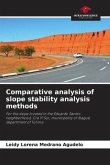One of the promising ways of combating poor ruminant nutrition and under-utilization of available pasture forages is studying the behaviours of grazing animals, especially goats. This is due to the fact that lack of sustainable ruminant feeding strategies contributed to the slow growth and high mortality of ruminants in Nigeria. The comparative grazing behaviour of Thirty eight goats; comprising Thirty three West African Dwarf does and, Five Maradi bucks with Average Weight of 9.50kg and 15.45kg respectively, were observed in the study for a period of 6 weeks. Standard procedures were used to underscore the grazing behaviour of WAD and Maradi goats and proximate composition. The parameters measured under grazing behaviour: grazing, ruminating, walking, drinking and resting while crude protein, crude fibre, ether extract and ash were assessed in proximate composition. %. The study showed that breeds of goats exhibit different grazing behaviours when raised on pastures composed of different forages with varying nutrient composition.
Bitte wählen Sie Ihr Anliegen aus.
Rechnungen
Retourenschein anfordern
Bestellstatus
Storno








